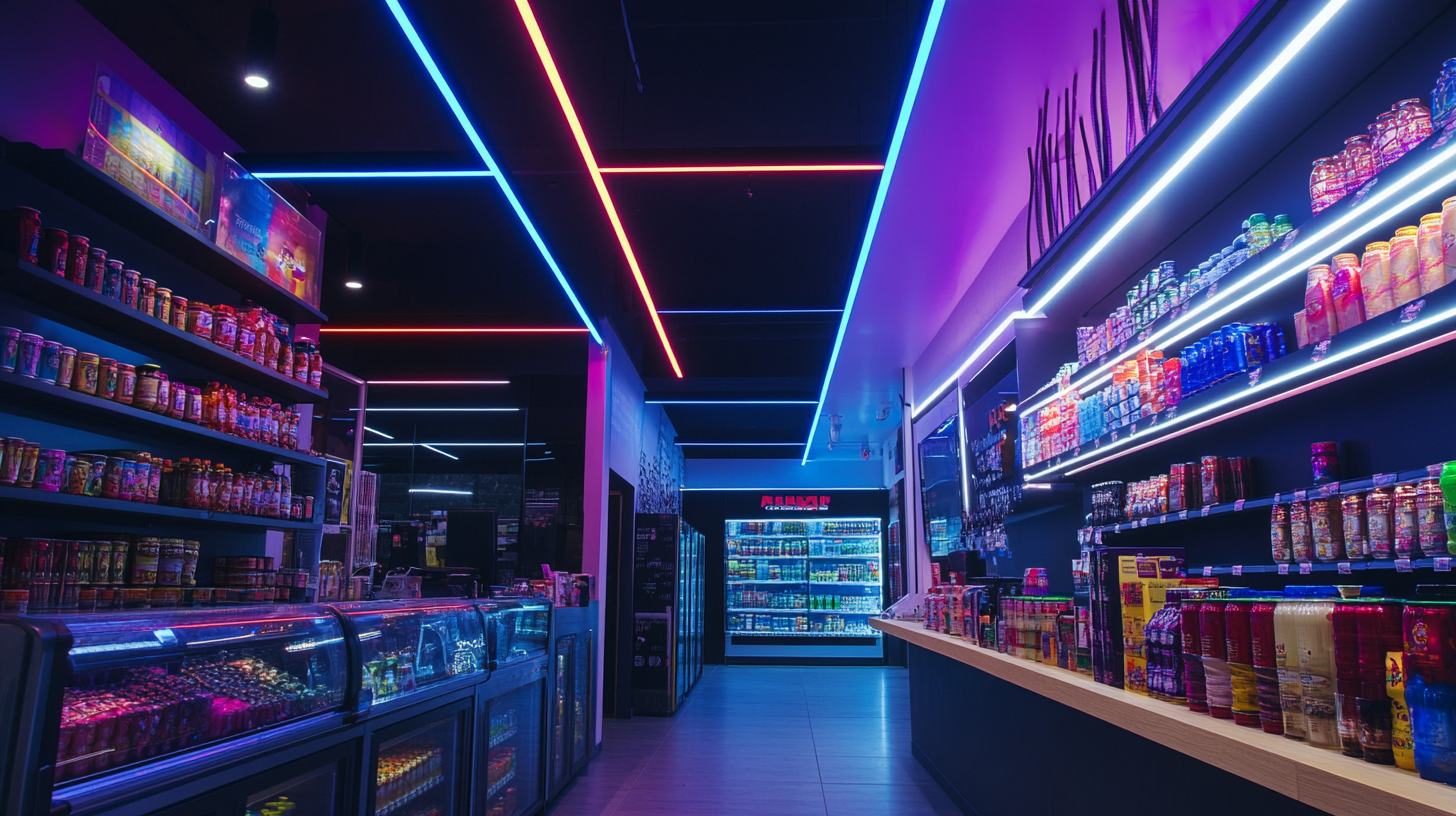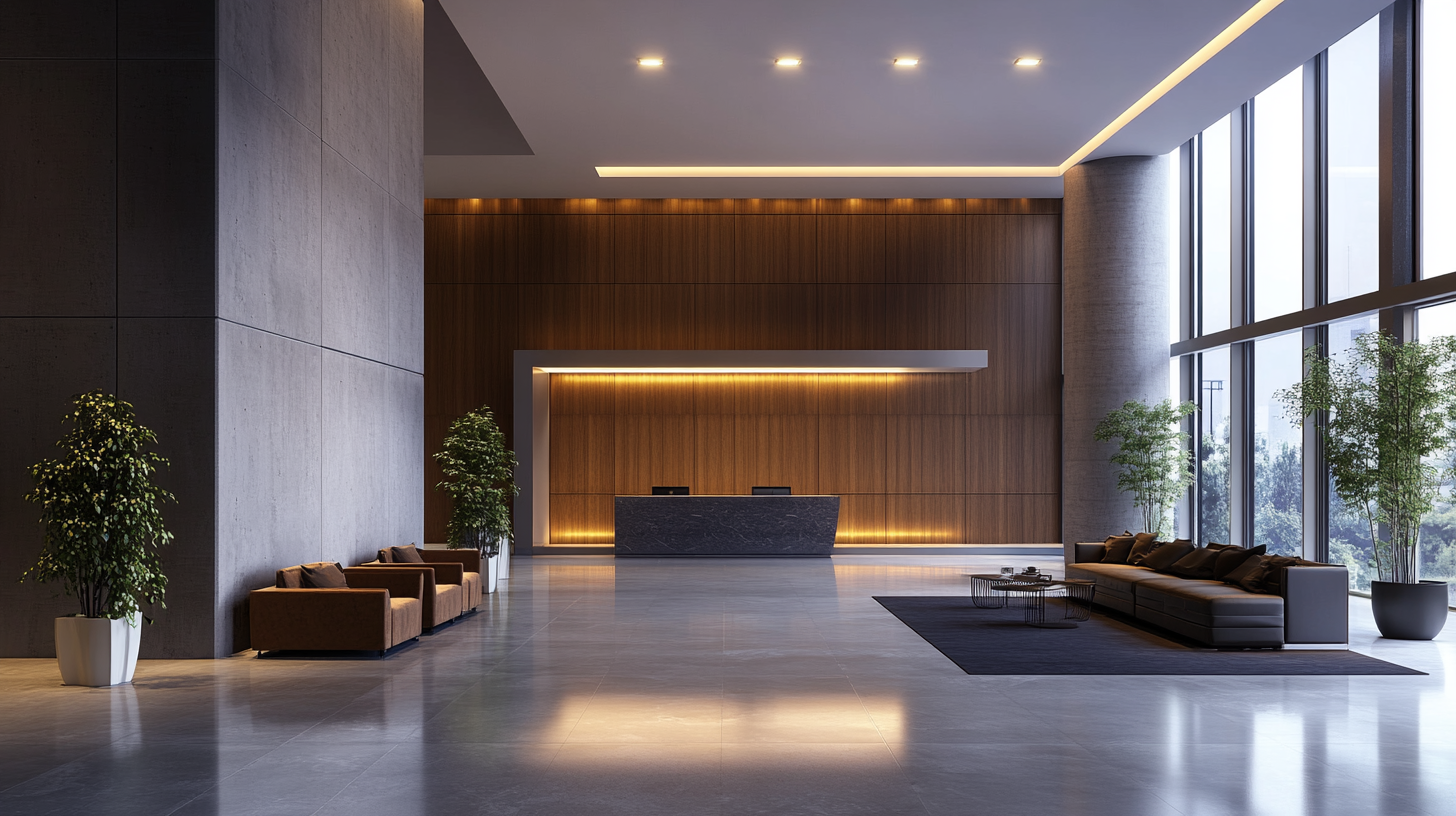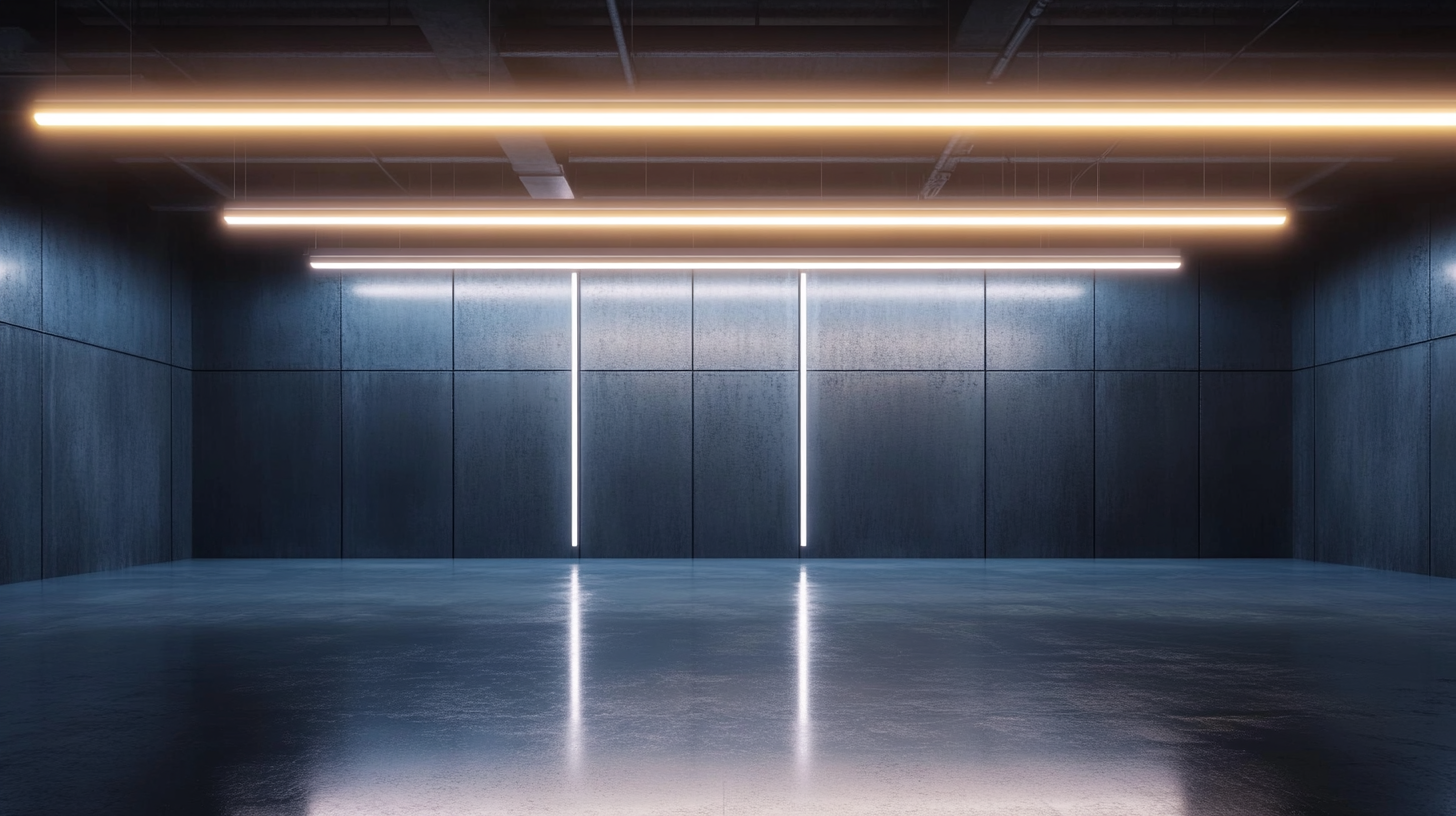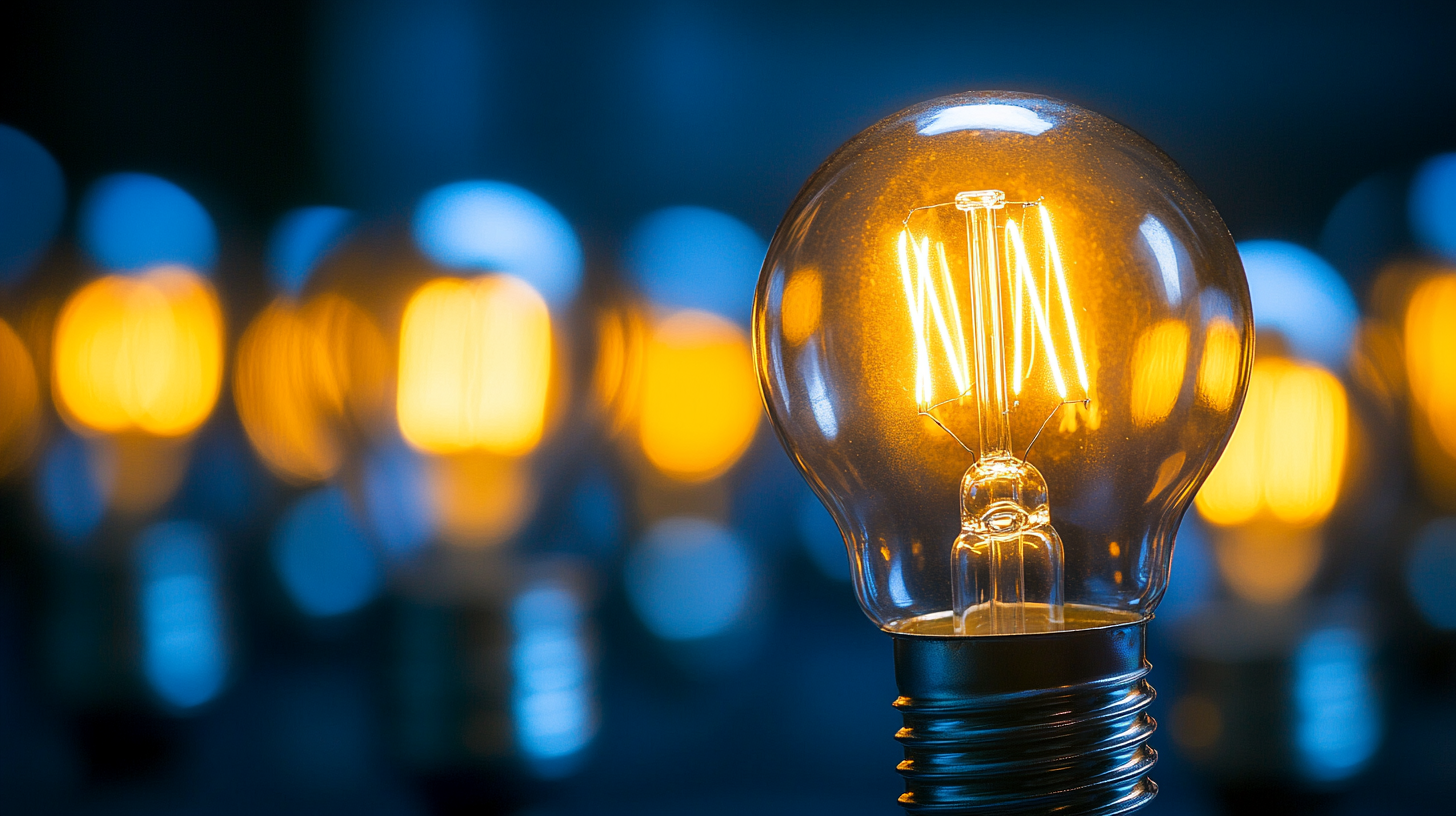Unlocking the Benefits of Commercial Led Lighting for Your Business
In today's competitive business landscape, the quest for cost efficiency and sustainability has led many organizations to explore innovative solutions. One such solution making waves is Commercial LED Lighting, a technology that not only reduces energy consumption but also enhances the overall ambiance of workspaces. According to the U.S. Department of Energy, LED lighting can save businesses up to 75% in energy costs compared to traditional lighting options. This substantial reduction translates into significant savings over time, making the adoption of LED lighting a smart investment for enterprises looking to optimize operational expenses.
Moreover, the benefits of Commercial LED Lighting extend beyond just cost savings. A report by the Illuminating Engineering Society highlights that improved lighting conditions can enhance employee productivity and well-being. Better quality light reduces eye strain and increases cognitive functions, which can lead to higher employee engagement and satisfaction. As businesses continue to prioritize employee welfare alongside bottom-line growth, integrating Commercial LED Lighting into their operations presents a compelling case for those aiming to unlock a brighter and more efficient future.

The Energy Efficiency Edge: How Commercial LED Lighting Lowers Your Bills
Businesses today are constantly seeking ways to reduce operational costs, and one of the most effective strategies is upgrading to commercial LED lighting. The switch to LED technology not only provides brighter and more efficient lighting but also significantly lowers energy bills. With recent developments in energy efficiency rebates, companies that invest in LED upgrades can enjoy immediate financial benefits, including lower energy expenses and reduced maintenance costs. The Biden-Harris Administration's commitment to enhancing energy standards through the DOE's finalization of efficiency standards for lightbulbs is a noteworthy shift in the landscape of commercial lighting. These updates are expected to bolster energy savings nationwide, further encouraging businesses to transition to LED systems that consume less power and have longer lifespans compared to traditional bulbs. This transition not only aligns with environmentally friendly practices but also enhances the aesthetic appeal of commercial spaces, attracting more customers. Moreover, the booming United States LED lighting market—projected to reach USD 12.8 billion by 2033—indicates a strong trend toward energy-efficient solutions. Businesses that leverage this growth by adopting LED lighting are not just saving money; they are positioning themselves at the forefront of innovation and sustainability. With the added impact of artificial intelligence in energy management, companies can navigate future challenges more effectively while reaping the economic rewards of energy efficiency.

Enhancing Workplace Productivity: The Impact of LED Lighting on Employee Performance
The evolution of workplace environments has brought a heightened awareness of the factors that affect employee productivity. One significant aspect is lighting, particularly the shift towards LED lighting solutions. Research has shown that the quality and type of lighting can substantially impact employee performance. LED lighting not only reduces energy costs but also enhances the overall ambiance of the workplace, creating a more inviting and stimulating environment for employees.
Studies indicate that better lighting directly correlates with improved employee well-being and productivity. For instance, optimal lighting can enhance focus and reduce fatigue, ensuring that employees remain engaged throughout their workday. Transitioning to LED lighting can complement innovative work strategies, like chronoworking, which aligns work schedules with employees’ natural circadian rhythms. By syncing activities with their internal body clocks, businesses can foster a more productive atmosphere where employees thrive.
In addition, the rise in remote work emphasizes the importance of a well-lit workspace. Many employees have adapted to new home office setups, and ensuring adequate lighting remains essential for maintaining high productivity levels. Employers who invest in quality LED lighting solutions can thus create a conducive environment, ensuring that whether in the office or at home, employees experience optimal conditions to perform at their best.

Sustainable Solutions: The Environmental Benefits of Switching to LED Lighting
In recent years, businesses have become increasingly aware of their environmental impact, prompting many to seek sustainable solutions. One of the most effective strategies is switching to LED lighting, which offers significant environmental benefits. By replacing traditional lighting systems with LED technology, businesses can substantially reduce energy consumption, leading to lower carbon emissions. This transition not only improves a company’s sustainability profile but also contributes to combating climate change on a broader scale.
Additionally, LED lights have a longer lifespan compared to their incandescent or fluorescent counterparts. This longevity means fewer replacements are needed, resulting in less waste and reduced resource consumption over time. Businesses can further enhance their green initiatives by minimizing their waste in landfills, as fewer light bulbs mean fewer disposal issues. Moreover, many LED products are recyclable, providing an eco-friendly end-of-life solution that supports a circular economy.
Switching to LED lighting also promotes a healthier work environment. Traditional lighting options can contain harmful substances like mercury and may contribute to poor air quality. LED lights, on the other hand, are free from toxic chemicals and do not emit UV rays, creating a safer atmosphere for employees and customers alike. Embracing LED technology not only supports environmental sustainability but also positions businesses as conscientious leaders in their industries, inspiring others to follow suit.

Design and Aesthetics: Creating the Perfect Ambiance with LED Lighting
Creating the perfect ambiance for your business is crucial, and commercial LED lighting plays a significant role in achieving this goal. With its versatility in design and functionality, LED lighting can transform any space into an inviting and aesthetically pleasing environment. Whether you run a retail store, a restaurant, or an office, the right lighting can enhance the overall atmosphere, attract customers, and improve employee satisfaction.
Recent innovations in automotive design, such as the new BMW 4 Series and the Audi A3, emphasize the importance of blending aesthetics with performance. Similarly, in commercial spaces, LED lighting offers a sleek and modern look while being energy-efficient. Features like adjustable brightness and color temperature allow businesses to customize their lighting to fit specific themes or moods. This adaptability not only showcases products effectively but also creates a welcoming vibe that can encourage more prolonged customer engagement.
Furthermore, just as the latest vehicles incorporate advanced technology to enhance driver and passenger experience, modern LED lighting solutions offer smart features. Integration with smart building systems allows businesses to monitor and adjust lighting remotely, optimizing energy usage while maintaining a sophisticated ambiance. By investing in commercial LED lighting, businesses can mirror the dynamic aesthetics found in cutting-edge automotive design, ultimately elevating their brand image and creating memorable experiences for their clients and staff alike.
Future-Proofing Your Business: The Durability and Longevity of LED Technology
The durability and longevity of LED technology make it a crucial investment for businesses looking to future-proof their operations. According to the U.S. Department of Energy, LED lighting can last up to 25 times longer than traditional incandescent bulbs, with an average lifespan of around 50,000 hours compared to just 1,000 hours for incandescents. This remarkable longevity reduces replacement frequency, allowing businesses to save significantly on labor and materials over time.
Moreover, LED technology is designed to withstand extreme conditions, making it an ideal choice for various commercial applications. A report from the National Electrical Manufacturers Association (NEMA) highlights that LEDs are resistant to shock and vibrations, which is essential for businesses in sectors like manufacturing and warehousing where durability is key. With less frequent burnout rates, companies face fewer disruptions in their operations, ensuring a more consistent and reliable work environment.
In addition to their lifespan and durability, LEDs also boast energy efficiency, consuming up to 75% less energy than traditional lighting solutions. This efficiency translates into lower utility bills and a reduced carbon footprint, aligning with the growing trend of sustainability in business practices. The Environmental Protection Agency notes that such energy savings can contribute to significant cost reductions yearly, allowing businesses to allocate more resources towards growth and innovation. By investing in commercial LED lighting, businesses not only enhance their operational efficiency but also fortify their long-term sustainability strategy.

